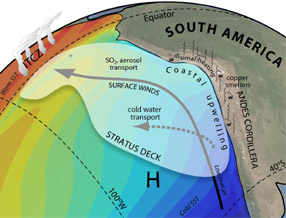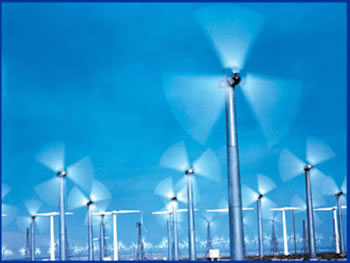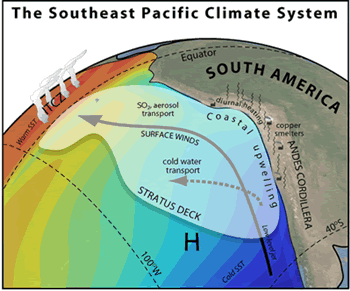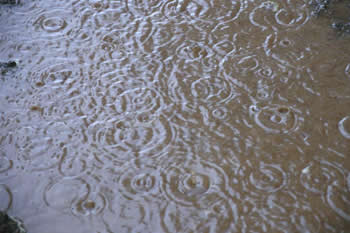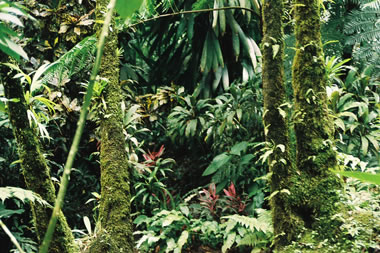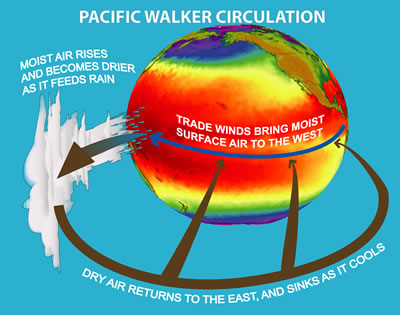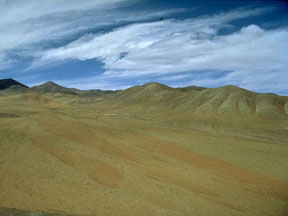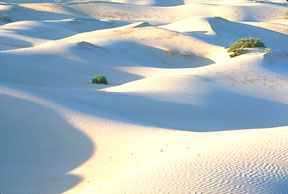Click on image for full size
Image courtesy of Ron Woods.
Winds in the Southeast Pacific
Winds in the Southeast Pacific have a strong influence on regional climate and play an important role in several large-scale, global climate phenomena.
The Hadley cell is a global atmospheric circulation pattern between the equator and 30° North and South latitude. Air heated by intense sunlight near the equator rises, dropping lots of rain and forming rainforests around the globe. At the top of the troposphere this rising air flows away from the equator; the half in the Southern Hemisphere flows southward at high altitudes. Around 30° south latitude this dry air descends, then flows back northward along the surface towards the equator to fill the low pressure "void" created by the ascending air. The Coriolis effect, generated by Earth's spin, turns this northbound surface wind somewhat westward. These southeast to northwest winds are called the trade winds. The high "wall" of the Andes Mountains along the western edge of South America channels the flow of the trade winds along the coast, making the winds especially strong in this region. These winds are so strong that they are sometimes referred to as the "coastal jet".
The westward bend of the Pacific trade winds brought on by the Coriolis effect has major effects on global climate. The winds are part of a larger circulation of air across the entire South Pacific called the Walker circulation. The vast expanse of the Pacific Ocean makes the atmospheric circulation in this area unique on our planet because of the lack of continental land masses that could "interfere" with the flow of the air. The motions of the air in this region have a strong influence on ocean circulation in the Pacific, including the episodic climate phenomena known as El Niño and La Niña.
The strong trade winds along the South American coast also produce local effects. Because the air is dry, having lost its moisture as rainfall in the tropics, it helps create Chile's Atacama Desert - one of the most arid places on Earth. The winds help stir up coastal waters, which bring cold, deep water to the surface and produce powerful ocean eddies. This helps make the region one of the most productive fisheries in the world, which influences local marine biology as well as human economic activity. Finally, the strong winds carry aerosol particles from industrial activity in Chile out to sea, where they influence cloud formation and thus the regional weather and climate.


